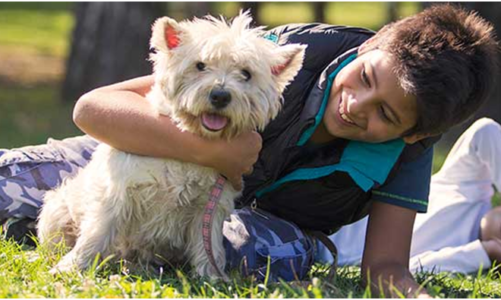Nexgard Spectra (a combination of afoxolaner and milbemycin oxime) is a highly effective, prescription-only product. While it is safe for the vast majority of dogs when used as directed, understanding its safety profile is key to being a responsible pet owner.
1. It’s FDA/EMA Approved and Vet-Trusted, But Not Without Potential Side Effects
- What it means: Nexgard spectra for dogs has undergone rigorous clinical trials for safety and efficacy. It is not an unregulated over-the-counter product. However, like any medication, it can cause side effects in a small percentage of dogs.
- Owner Takeaway: You are using a well-researched, vet-supervised product, but you should still be vigilant for any adverse reactions.
2. The Most Common Side Effects are Gastrointestinal
- What to watch for: The most frequently reported side effects are vomiting, diarrhea, and lethargy. This is often because the medication is killing internal parasites, which can cause a temporary upset stomach as they are expelled.
- Owner Takeaway: A mild, transient bout of vomiting or soft stool after the first dose is not uncommon. If it’s severe, persistent, or accompanied by blood, contact your vet immediately.
3. Neurological Side Effects are Rare, But Possible
- What to watch for: Due to the milbemycin oxime component, there is a very low risk of neurological side effects, such as tremors, uncoordinated movement (ataxia), or seizures.
- Owner Takeaway: These reactions are rare and are more likely to occur in dogs with a pre-existing predisposition to seizures (e.g., certain breeds like Border Collies) or if a dog is given a dose significantly higher than recommended. Report any neurological signs to your vet at once.
4. Breed-Specific Sensitivity is a Key Consideration
- What it means: Some herding breeds (and their mixes) can have a genetic mutation (MDR1 gene mutation) that makes them more sensitive to certain drugs, including the milbemycin in Nexgard Spectra. This can increase the risk of neurological side effects.
- Breeds of concern: Collies, Australian Shepherds, Shetland Sheepdogs, Old English Sheepdogs, German Shepherds, Longhaired Whippets.
- Owner Takeaway: Inform your vet of your dog’s breed. They may recommend testing for the MDR1 mutation or choosing an alternative preventative if your dog is at high risk.
5. Proper Dosing is Non-Negotiable for Safety
- What it means: Nexgard Spectra is weight-based. Giving a dose for a 50 lb dog to a 10 lb dog is dangerous and can lead to overdose and severe side effects.
- Owner Takeaway: Weigh your dog accurately before each dose. Do not guess their weight. Use the exact dosage prescribed by your veterinarian for your dog’s current weight range.
6. The Palatable Chew is a Double-Edged Sword
- The Benefit: The beef flavor makes it easy to administer.
- The Risk: Because it’s so tasty, dogs may try to eat another dog’s dose or get into the packet. This can lead to overdose.
- Owner Takeaway: Store the chews securely out of reach. Administer doses separately to ensure each dog gets only their own prescribed chew.
7. It’s Safe for Most Puppies, But Check the Age Limit
- What it means: Nexgard Spectra is approved for puppies as young as 8 weeks old and weighing at least 4 pounds (1.8 kg).
- Owner Takeaway: Do not use this product on puppies younger than 8 weeks or under the minimum weight. Always follow the age and weight guidelines provided by your vet and the manufacturer.
8. Observe Your Dog After the First Dose
- What to do: While serious reactions are uncommon, it’s prudent to keep a closer eye on your dog for the first few hours after giving any new medication for the first time.
- Owner Takeaway: Note their energy levels, appetite, and bowel habits. This helps you establish a baseline and quickly identify any potential issues.
9. Know When to Call the Vet Immediately
Contact your veterinarian without delay if you observe any of the following after administration:
- Persistent vomiting or diarrhea
- Signs of an allergic reaction (facial swelling, hives, difficulty breathing)
- Severe lethargy or weakness
- Neurological signs (tremors, seizures, stumbling, loss of balance)
- Loss of appetite lasting more than 24 hours
10. The Benefit Vastly Outweighs the Risk for Most Dogs
- The Big Picture: The diseases prevented by Nexgard Spectra—such as heartworm disease (which is often fatal and always expensive to treat), tick-borne illnesses like Lyme, and debilitating intestinal parasites—pose a far greater and more common threat to your dog’s health than the potential for a side effect.
- Owner Takeaway: Do not let the fear of rare side effects prevent you from using a highly effective preventative. The key is to use it informed and observantly, under the guidance of your veterinarian.
Summary: A Proactive Safety Checklist
- Consult your vet about your dog’s full health history and breed.
- Weigh your dog accurately before getting a prescription.
- Administer the correct dose with food to help reduce stomach upset.
- Store chews securely to prevent accidental ingestion.
- Monitor your dog, especially after the first dose.
- Report any concerning symptoms to your vet immediately.
By understanding these 10 points, you can confidently use Nexgard for cats and Spectra as a powerful tool in your dog’s healthcare regimen, ensuring they are protected from harmful parasites with minimal risk.




